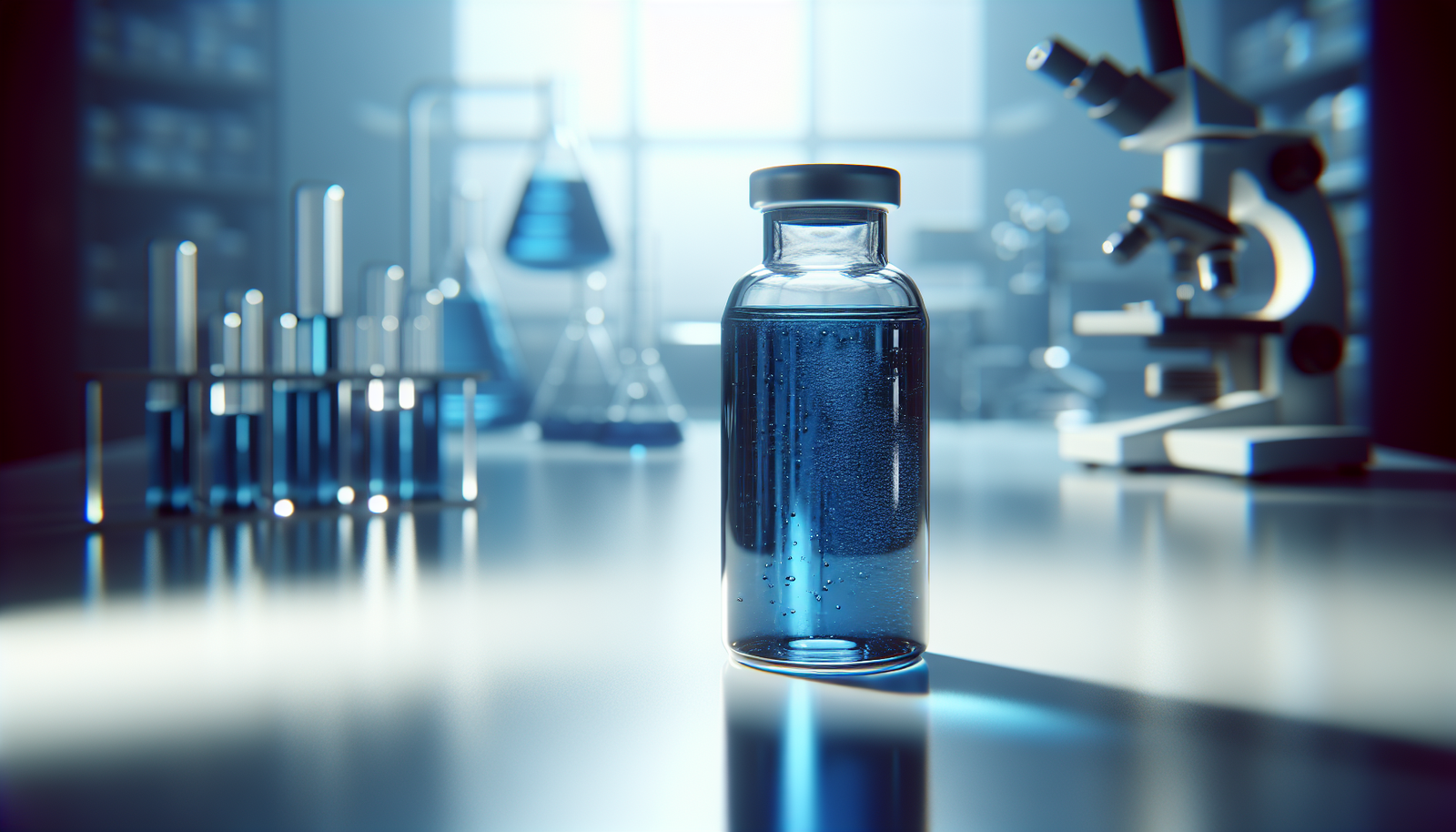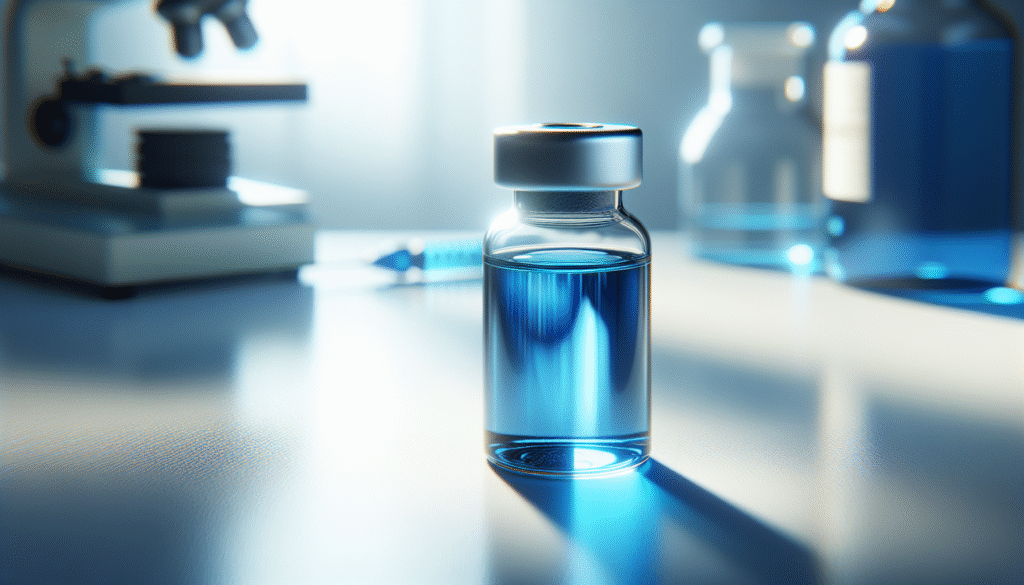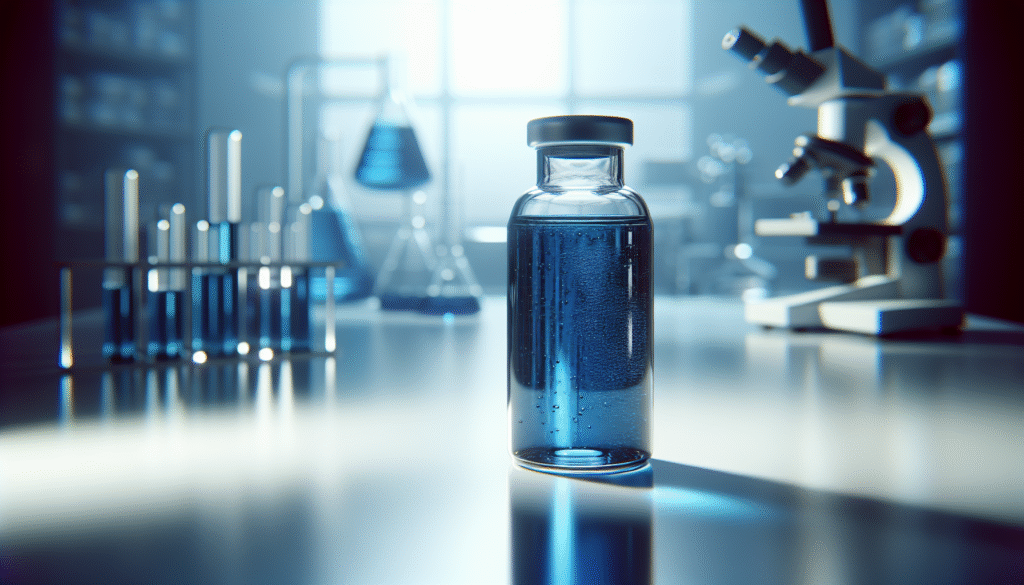
What do you know about Methylene Blue, and how can it potentially impact your life?
Understanding Methylene Blue
Methylene Blue is a synthetic dye that has been around for over a century. Originally developed for use in textiles, it has since found various applications in medicine and scientific research. With this guide, you will gain a comprehensive understanding of Methylene Blue, including its properties, benefits, and potential applications.
What Is Methylene Blue?
Methylene Blue, chemically known as MB, is an organic compound that is soluble in water and has a deep blue color. It belongs to the phenothiazine family and has been extensively studied for its various biochemical and therapeutic effects. Because of its unique properties, Methylene Blue serves as a vital substance in different fields, ranging from microbiology to clinical medicine.
Historical Background
The history of Methylene Blue is quite fascinating. Discovered in 1876 by Heinrich Caro, it was the first synthetic dye used for biological staining. Over the years, researchers and clinicians have identified additional uses for this compound, notably in the treatment of conditions such as methemoglobinemia. Understanding its historical context lends insight into its present-day applications.
The Chemical Structure of Methylene Blue
Chemical Composition
Methylene Blue has a clear structural formula represented as C16H18ClN3S. To break it down:
- Carbon (C): 16 atoms
- Hydrogen (H): 18 atoms
- Chlorine (Cl): 1 atom
- Nitrogen (N): 3 atoms
- Sulfur (S): 1 atom
This specific composition contributes to its characteristics, which are crucial for both its biological and industrial applications.
Physical Properties
Methylene Blue exhibits distinct physical properties that make it useful in various applications.
| Property | Description |
|---|---|
| Color | Deep Blue |
| Solubility | Soluble in water |
| Molecular Weight | 319.85 g/mol |
| Melting Point | 100 °C |
These properties allow Methylene Blue to be used effectively in numerous laboratory procedures and therapeutic scenarios.

Mechanism of Action
How Methylene Blue Works
Methylene Blue operates through several mechanisms, making it a versatile compound. Primarily, it serves as a redox agent, facilitating electron transfer in biochemical processes. This ability to donate electrons helps it to mitigate oxidative stress in cells, thus proving useful in various medical treatments.
Therapeutic Applications
-
Methemoglobinemia Treatment: One of the most well-known uses of Methylene Blue is for treating methemoglobinemia, a condition where hemoglobin cannot effectively release oxygen to body tissues. Methylene Blue assists in converting methemoglobin back to hemoglobin, restoring normal oxygen transport in the blood.
-
Neuroprotective Effects: Preliminary studies suggest that Methylene Blue may have neuroprotective qualities. Its antioxidant properties could be beneficial in treating neurological disorders, such as Alzheimer’s and Parkinson’s diseases, by reducing oxidative stress in neuronal cells.
-
Photography and Histology: In addition to medical uses, Methylene Blue serves an important role in photography and histology. As a stain, it can highlight cellular components under a microscope, aiding in the identification and diagnosis of various biological samples.
Dosage and Administration
Recommended Dosage
The appropriate dosage of Methylene Blue can vary significantly depending on the condition being treated. Below is a general guideline:
| Condition | Recommended Dosage |
|---|---|
| Methemoglobinemia | 1–2 mg/kg (IV), maximum 7 mg/kg |
| Cognitive Enhancement | 250–500 µg (oral), consult a physician |
| Colorant in Histology | Diluted in solution |
Always consult a healthcare professional before beginning any treatment with Methylene Blue, as incorrect dosages can lead to adverse effects.
Methods of Administration
Methylene Blue can be administered in several ways. The most common methods include:
- Intravenous (IV): This method is primarily utilized in a clinical setting for acute conditions.
- Oral: Capsules or tablets are available for those using it for cognitive enhancement or other health purposes.
- Topical: In some applications, Methylene Blue is applied directly to the skin for treating infections or wounds.

Safety and Side Effects
Side Effects
Although Methylene Blue can be highly effective, it is essential to recognize potential side effects. Commonly reported effects include:
- Urine Discoloration: One benign effect is the blue or green coloration of urine, which is harmless but can be alarming.
- Gastrointestinal Distress: Nausea, vomiting, and abdominal pain have been reported in some users, especially in higher doses.
- Serotonin Syndrome: A significant concern arises when Methylene Blue interacts with other medications that increase serotonin levels, such as SSRIs. This can lead to a dangerous condition known as serotonin syndrome.
Contraindications
Certain populations should avoid Methylene Blue. These include:
- Individuals with G6PD Deficiency: Methylene Blue can lead to hemolytic anemia in those with this genetic enzyme deficiency.
- Pregnant or Nursing Women: Limited studies indicate potential harm; hence, use should be cautious and under medical supervision.
- Serotonin Inhibitors: Those taking SSRIs or other serotonin-affecting medications should not use Methylene Blue without a doctor’s oversight.
Methylene Blue in Research
Ongoing Studies
Scientists continue to investigate the myriad of health benefits associated with Methylene Blue. Research has expanded into areas such as:
- Longevity and Aging: Some studies are exploring its capacity to promote cellular health and longevity.
- Cancer: Preliminary research suggests potential anticancer properties of Methylene Blue, opening avenues for further investigation in oncology.
Clinical Trials
Clinical trials have been conducted worldwide to assess Methylene Blue’s effectiveness and safety in various conditions. Results from these studies often guide future medical recommendations and practices.
Methylene Blue and Other Substances
Interaction with Medications
Methylene Blue can interact with various medications. Understanding these interactions is vital for safe usage:
| Medication Class | Interaction |
|---|---|
| SSRIs | Increased risk of serotonin syndrome |
| MAO Inhibitors | May lead to hypertensive crisis |
| Certain Antibiotics | Doxycycline may reduce the effectiveness of MB |
Stacking with Supplements
Some individuals using Methylene Blue for cognitive enhancement may consider stacking it with supplements like:
- Omega-3 Fatty Acids: For improved neuroprotection.
- Curcumin: To boost antioxidant capacities.
Consult a healthcare provider before combining substances to ensure safety and efficacy.
Practical Applications
Methylene Blue in Photography
Due to its unique dye properties, Methylene Blue has applications in photography, particularly in color correction and as a stain in biological photography. Understanding these uses can enhance your photographic practices.
Methylene Blue in Environmental Science
In environmental science, Methylene Blue is used in various applications including:
- Water Quality Testing: For determining the presence of pathogens.
- Biomonitoring: Observing the effects of pollutants on living organisms.
Methylene Blue in Art
Various artists and craftsmen also utilize Methylene Blue in dyes and inks. The rich blue color it imparts adds unique aesthetic value to artistic creations.
Future Perspectives
Advances in Research
As research on Methylene Blue continues to expand, there may be new findings that alter its applications and benefits. Keeping abreast of these studies will provide valuable insights into its evolving role.
Public Perception
The perception of Methylene Blue among the general public is shifting, especially with increasing interest in alternative and integrative medicine. As more individuals explore its benefits, the demand for reliable information will be paramount.
Conclusion
Understanding Methylene Blue offers intriguing insights into its multifaceted role in medicine, science, and beyond. While its potential benefits are undeniable, it is vital to approach the usage of Methylene Blue cautiously and informedly. Always consult with healthcare professionals to ensure safety and efficacy tailored to your unique health circumstances. This foundational knowledge empowers you to navigate your journey with Methylene Blue judiciously and wisely.